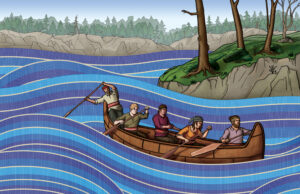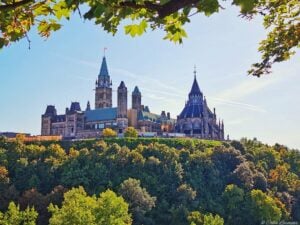
Environment
The research project trying to find every tornado in Canada
Tracking the country’s extreme weather events to answer the question: are storms getting worse?
- 3514 words
- 15 minutes
Environment

The provincial government recently announced its plans for potentially the largest expansion of the Ontario Greenbelt since its inception, to include additional critical water systems, as well as the Paris-Galt Moraine, a glacial deposit that is essential for headwaters. But what does that ultimately mean? What are the advantages, what needs to be considered on an environmental level and on a recreational level?
In 2017, the Greenbelt expanded to include 21 urban river valleys. Now the government is looking to enhance the coverage to include even more urban river valleys and related systems.
“The foundation’s done a lot of work on assessing the value of the ecosystem services that are supplied by the Greenbelt,” says Edward McDonnell, CEO of the Greenbelt Foundation. “We need to really find ways to maximize the value of existing natural systems.”
Anne Bell, the director of conservation and education for Ontario Nature, says the current expansion plans are too limited — and that more needs to be considered when expanding the Greenbelt.
“If there’s development threatening our urban river valleys, that development will take place on private land. And so it’s the entire river valleys that need to be included in the Greenbelt, not just bits and pieces, not just the public lands, which are already adequately protected by policy.”
Bell also says it’s important to consult with Indigenous communities, as the Greenbelt expansion would be on traditional territories, as well as protecting farmland development and safeguarding local food sources.
“It can be about securing local food, guarding drinking water, building climate resilience, conserving biodiversity, creating economic prosperity, all these things,” Bell says. “The [proposal focuses] only on the Paris-Galt Moraine and a couple of urban river valleys, and only the public lands within those river valleys. It’s just not enough. We need something that’s going to deliver on water protection and all of these other things that we’re hoping for.”
Not only do those aspects need to be considered, the expansion of the Greenbelt can also offer tourism, connect communities and utilize nature in conjunction with protecting it.
One way this is happening is with cycling networks in the Lake Ontario watershed area. The Greenbelt Foundation reached out to the Waterfront Regeneration Trust and asked them to create a network of biking trails, working together before building a cycling route down to the Great Lakes. Marlaine Koehler, the executive director of the Waterfront Regeneration Trust, says those routes connect to others that can take cyclists through the protected areas.
“These are signed routes that will take from the Great Lakes Waterfront Trail up to the Greenbelt. The result is a series of signed, easy-to-do loops,” she says.
Existing paved trails were used for both the main and connecting routes so the surrounding areas weren’t disrupted.
“When you’re on the Greenbelt, and you look down and you can feel the weight of Lake Ontario, it dawns on you,” Koehler says. “This is what a watershed is, it’s a basin. And the water starts here at this high point on the land, and it travels through these streams and rivers down to that lake. And it’s a real ‘aha’ moment for a lot of people.”
McDonnell agrees. Now with the pandemic, the desire to be outside and enjoy nature is higher than ever before. He says communities can benefit from outdoor recreational spaces, given that their natural value isn’t undermined.
“Access to green spaces becomes critically important. It further underscores the importance of nature to our both individual health and population health,” he says.
The Foundation has recently received $12 million in renewed funding, which will allow the Foundation to continue research and provide grants that can enhance the Greenbelt. McDonnell says they will continue to focus on growing the agricultural sector and other areas of the Greenbelt.
Are you passionate about Canadian geography?
You can support Canadian Geographic in 3 ways:

Environment
Tracking the country’s extreme weather events to answer the question: are storms getting worse?

Environment
David Boyd, a Canadian environmental lawyer and UN Special Rapporteur on Human Rights and the Environment, reveals how recognizing the human right to a healthy environment can spur positive action for the planet

People & Culture
“We were tired of hiding behind trees.” The ebb and flow of Métis history as it has unfolded on Ontario’s shores

Environment
The Canadian federal law regulating toxic substances has been updated for the first time in more than two decades